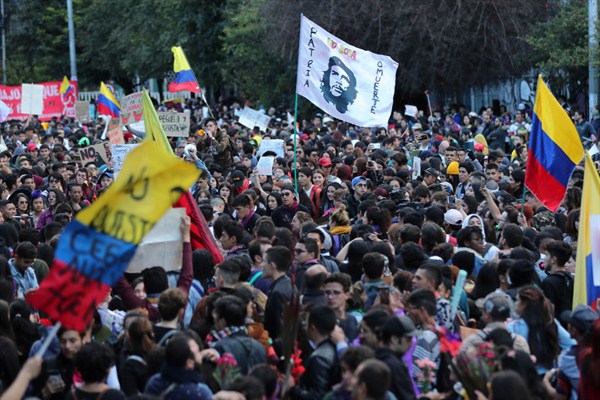For the third time in two weeks, Colombians turned out Wednesday for a national strike, demanding the government of President Ivan Duque accept a wide-ranging list of popular demands. With hundreds of thousands of people taking to the streets in protest, Duque faces a political challenge that is magnified by the wider context in which it is unfolding: a proliferation of demonstrations across the region and the world, as far away as the Middle East and Hong Kong, some of which have already succeeded in toppling governments, including one in South America.
This protest effect is a new phenomenon in the region. Protests in one South American country are fortifying demonstrators in another—first by highlighting grievances, then by inspiring people to take action, and finally by proving that individuals who might have felt powerless may just have a chance to effect drastic change. Just as crucially, when demonstrators manage to achieve their goals—as they did in Bolivia, Ecuador and, perhaps soon, Chile—it sends a message to leaders that they cannot afford to ignore protests and hope they simply run out of steam.
Colombia is a good example of how this phenomenon is unfolding. Few people paid attention when a leading Colombian labor union decided to call for a strike to protest a series of rumored economic proposals with a scant chance of becoming law, which Duque says he never supported. That was back on Oct. 4, weeks before Bolivia held presidential elections that many charged were rigged, sparking a national convulsion that ended in the ouster of President Evo Morales on Nov. 10. It was also before the massive protests that have rocked Chile, prompting what will apparently be fundamental reforms by the Chilean government, including the drafting of a new constitution.

